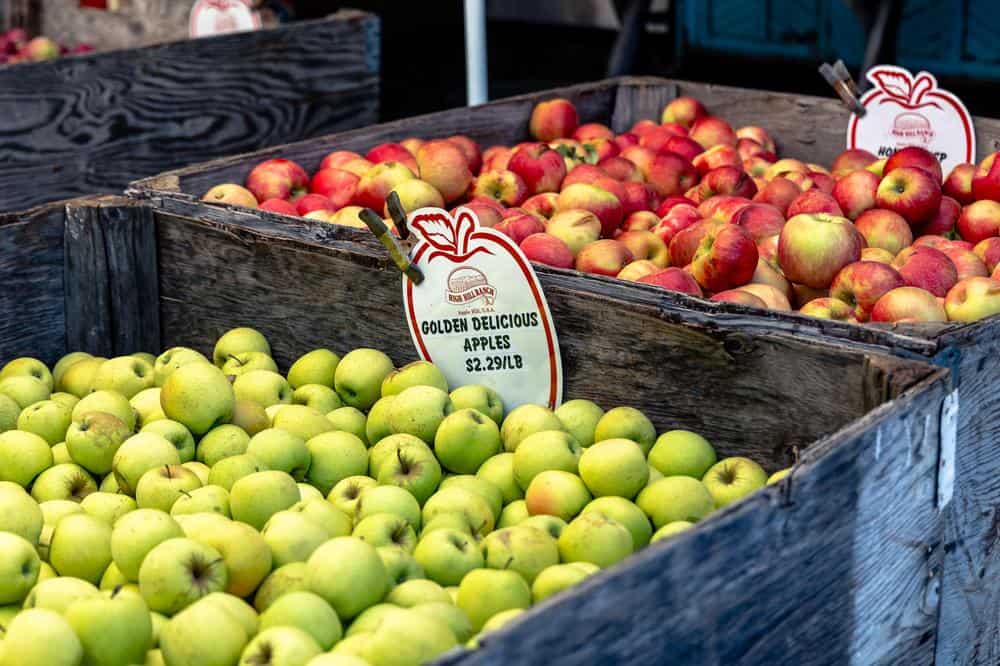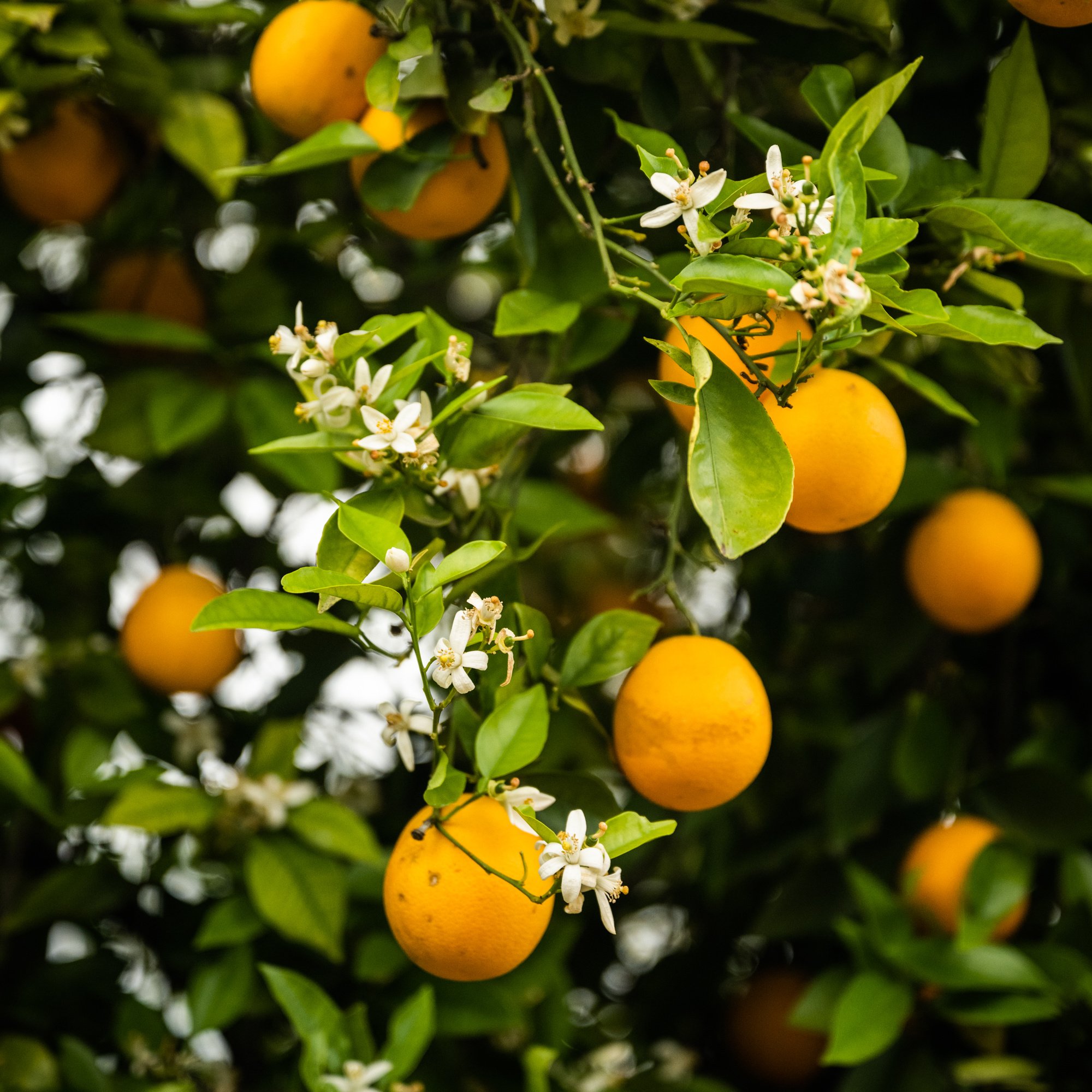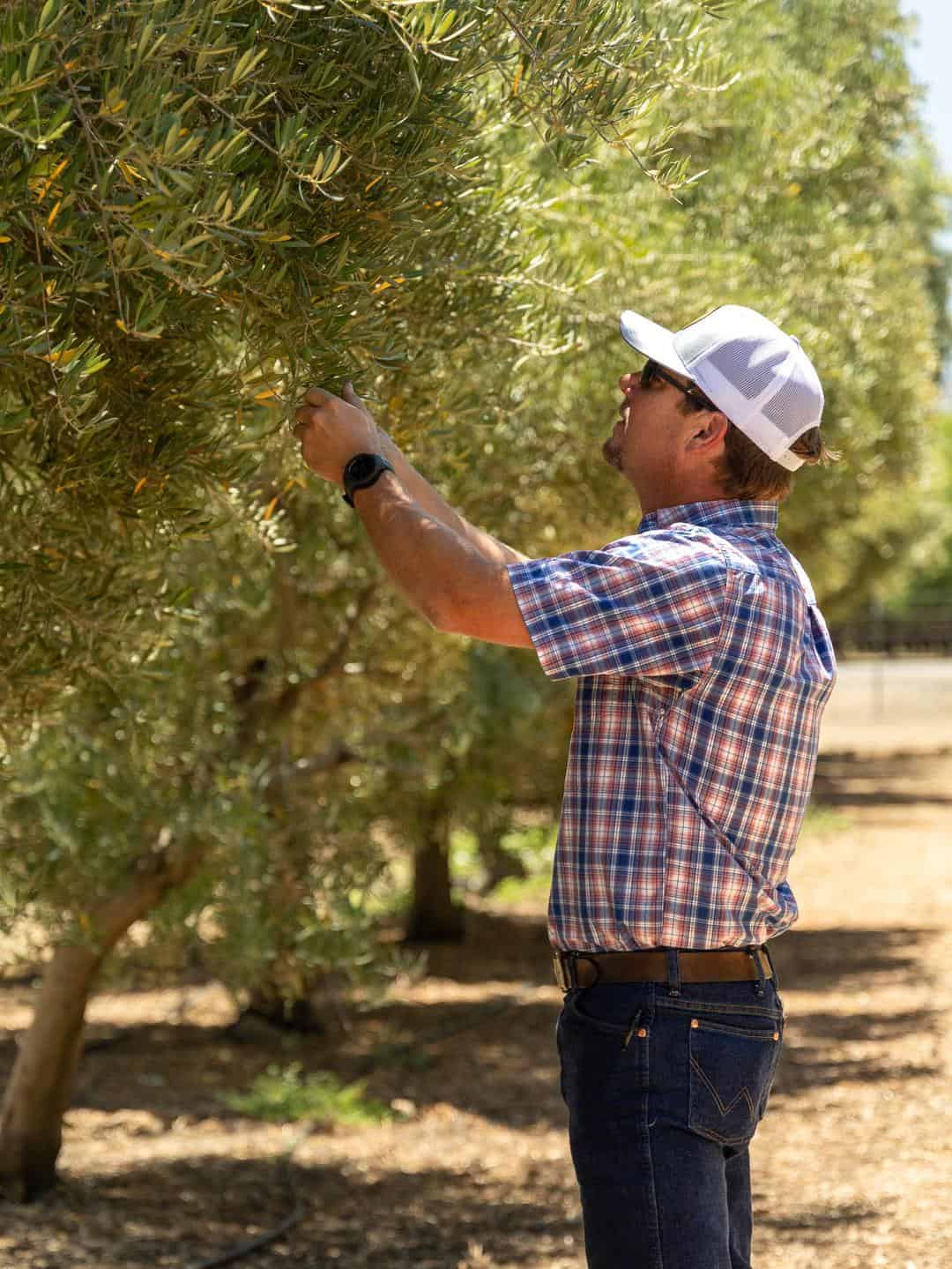How Do Apples Grow in California?
Apples are synonymous with fall. They’re the star in some of our favorite treats, from apple cakes to baked apples, appletinis and the American classic, apple pie. But what do you really know about when, where and how apples grow? We met with three apple farmers to learn more.
When were apples first grown in the United States?

Apples have flourished in the United States for hundreds of years. Pilgrims in the Massachusetts Bay Colony planted the first recorded apple trees in the 1600s. From their beginning with early settlers, apples are now ingrained into our country’s history, folklore and identity.
Every American child has heard stories of Johnny Appleseed. Legend says that the folk hero traveled across the country scattering apple seeds so that early Western settlers would have access to nutritious fruit. In reality, he planted actual apple orchards and the fruit was used to create alcoholic beverages – but that story doesn’t have the same appeal.

The saying “as American as apple pie” which may be attributable to early stories such as those of Johnny Appleseed,the saying became ingrained into pop culture in World War II. “For mom and apple pie” was often the answer young soldiers gave when asked why they had enlisted. Oddly enough, neither apples nor apple pie are actually American in origin – but that’s a story for another day. Then and now, apple pie is associated with patriotism and often graces tables on national holidays like Independence Day and Thanksgiving.
Fun fact: Despite the apple’s association with all things American, the popular fruit is actually native to Kazakhstan!
Where are apples grown?
Almost seventy percent of the Nation’s apples are grown in Washington – but did you know that apples are grown in California, too? El Dorado County is California’s largest producer and home to Apple Hill, a popular fall agritourism destination. Apple Hill is a collection of apple orchards, bake shops and fruit and vegetable farms dedicated to celebrating apple season. They offer incredible baked goods and family activities, including you-pick apples. Every fall, folks flock to the small town in the Sierra Nevada mountains. For many families, a trip to Apple Hill is now an annual family tradition. Julien and Oak Glen are also popular agritourism destinations during apple season.



Of course, not all apple farms are open to the public. Apples are grown in orchards throughout the state, but need cooler nighttime temperatures to thrive. For this reason, many of California’s apple orchards are located near the coast (Santa Cruz, Sonoma and San Bernadino) or at higher foothill elevations (Julien, Oak Glen and Apple Hill). The exception is San Joaquin County, where the apple orchards benefit from the cooling Delta breeze.
Do Washington apples taste different than California apples?
According to Gene Bolster, an Apple Hill grower, Washington apples face some serious competition from their California counterparts. “They have longer days than we do. We have an ideal growing season, with a long chilling season,” Gene explains, “In other words, the trees stay dormant longer. So while a Washington apple may look great, our apples have better flavor.”
What conditions do apple trees need to thrive?

Apple trees are hardy and can grow in almost any climate. However, they do need a specific set of conditions to produce high-quality fruit. Ideally, apple trees prefer full sun, well-drained soil, cooler winters, and temperate summers. However, growing apples where it is too cold, such as areas with hard frost and snow, can damage the crop.
How long does it take for an apple tree to produce fruit?
Young apple trees take 2 or 3 years to get established. They will produce some fruit after about 4 to 5 years and a significant crop after 8 to 9 years.
Like most things in life, apples are subject to trends. Apples are a permanent crop, but certain varieties come in (and out) of fashion. For example, Apple Hill grower Tom Heflin has many older, established Red Delicious trees in his orchards. That particular variety has steadily become less popular. How do apple farmers adapt?

“The problem with that sort of thing is it takes a number of years to develop an apple orchard,” Tom answers, “and so we grafted Granny Smith onto the Red Delicious. And that saves you about five years of getting ready to produce apples. If you put in a young tree, you don’t get a really big crop until eight or nine years old. Whereas if you graft, you’re gonna get a crop in two years, and you get a big crop again in four or five years. So it’s very efficient to graft.”
How do apples grow? Apples through the seasons…
Winter
Apples are a permanent crop. So, since there’s no logical start or end point, let’s begin with what happens in the orchard in wintertime. Apple trees are deciduous, meaning they lose their leaves in the winter as the weather turns cold. While the trees are dormant, growers do any necessary pruning. Apple grower Steve Tuso elaborates, “Pruning is important to promote sunlight into the tree’s cavity and color the fruit. If there’s too much shade, the apples won’t ripen on the interior portion of the tree.” Proper pruning helps the tree to produce the best quality fruit and reduces the risk of diseases. Fun fact: Some farmers are training newer plantings to a lower bush shape to facilitate hand harvest.
Spring
When spring arrives, leaves will emerge, and bloom usually occurs 3-4 weeks later – usually from mid-April through mid-May in California. Apples are not self-pollinating and require cross-pollination from another tree to produce fruit. They depend on bees and other pollinators to get the job done. When a flower is pollinated, fertilization occurs. The flower loses its petals, and tiny fruit begins to form. For the next few weeks, the immature apples continue to grow. Then, the crew thins the apples to ensure both uniform growth and that the tree can support the weight of the crop. Finally, nutrients are delivered to help promote overall even growth.
Summer

During the summer, growers closely monitor their crops and irrigate regularly. If there’s a particularly large crop on the tree, growers shorten their watering time to prevent the roots from oversaturation, since the weight of the fruit can cause the whole tree to topple over. Growers also work to keep the weeds at bay and watch for any pest or fungus issues.
Fall
Apples are harvested in the fall. Some earlier varieties, like Gala, are ready to harvest in early August. Late maturing varieties, including Pink Ladies and Arkansas Blacks, stay on the tree until sometime in November. Growers typically determine ripeness by measuring the sugar levels of the fruit on the tree.

Apples are hand-harvested by a skilled team. They use ladders, carefully climbing up to the top of the trees with a picking bag secured around their waist. Ripe apples separate easily from the tree, so the team uses only their hands to pull the fruit from the branches. It’s important to pick apples at peak ripeness so each apple tree is harvested multiple times. Apple grower Jerry Visman explains, “That’s a lot of work ’cause you got the bucket in front and, you know, it’s 20 or 30 pounds of apples. You gotta handpick each one and climb up and down that ladder all day long. So, I gotta hand it to the crew. They work hard to get all those apples, and they’re very gentle with them so they don’t bruise ’em. It’s a job picking apples!”
After the apples are harvested, the team gently loads the fruit into bins. Then, the apples are sorted by size using a sorting ramp. Fruit with any visible blemish is separated and used to create cider. Once the apples are sorted, crews whisk them away to cold storage to keep the fruit at peak freshness. Much of the fruit grown at Apple Hill is sold locally to visitors (either at their orchards or at Farmers Markets), while other growers ship their fruit to grocery stores.

How can you tell if apples are California Grown?

The best place to find California Grown apples is at your local Farmers Market or at an agritourism destination like Apple Hill. If you’re at the grocery store, look for the California Grown license plate on the product packaging or the store’s shelves or look for “California” as the place of origin on signs or produce stickers. Look for Golden State apple juice and apple cider too!
How to choose and store apples
Did you know that apples can last up to six months when stored properly? Our friend Jerry James Stone shares his best tips for choosing and storing apples!
What apples are best for pie and pie filling?
Wondering which apples are best for pie and pie filling? Here’s the scoop from our buddy Jerry James Stone. Then, use your newly gained knowledge to make Easy Apple Pie with a Cheddar Crust or Apple Dumplings! Pro-tip: Check out Jerry’s secret for how to peel apples quickly (using a power drill)!
What’s it like to be an apple grower? Learn more!



Now that you know all about apples, check out these delicious ways to use them!



Love fun farm facts? Check out our “How It’s Grown” series!















Article and photography by Hilary Rance.

